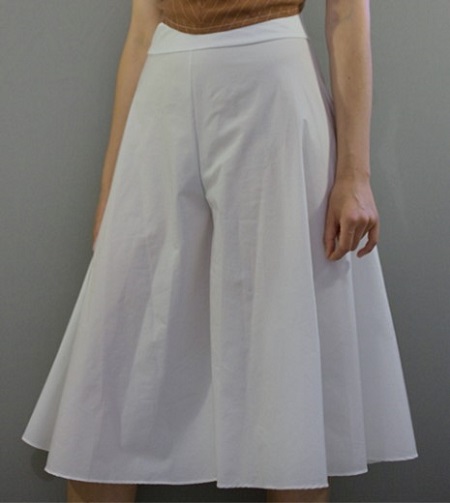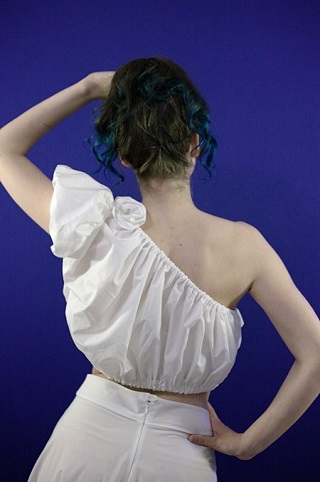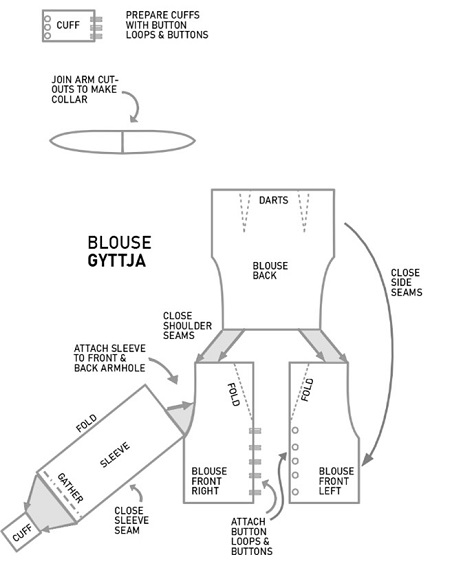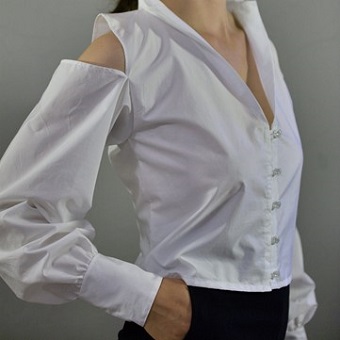Bodenzone
An Experimental Fashion Collection Investigating Zero-Waste Pattern Design and Eco-Friendly Textiles
01.10.2021
By: Thessa Kehler
Supervisor: Dr. Gesa Lüdecke
"Ordinarily, 15 to 25 percent of the fabric which is required to construct a garment ends up as waste as a result of deep-rooted and multifaceted conventions of designing a garment, pattern cutting, and garment production practices."
The fast fashion industry is known to be dirty and detrimental in terms of both its environmental and social impacts. With complex supply chains all around the globe, the origin of fibres, dyes, and manufacturing practices are rarely transparent to the consumer and often not even to brands themselves. Since the focus is set on maximizing production output, sales, and cost efficiency, the burden on the planet is ever-increasing, which is further fuelled by the high frequency and volume of purchases in today’s culture of consumerism.
The making of an item of clothing involves many different production steps, actors, and materials: from fibres to woven/knitted fabric, to design and pattern piece cutting, garment construction, retail, consumer use, and the end of life. Each stage or process is connected with various environmental impacts that affect the planet in different ways. Accordingly, processes can be improved at every stage in a wide range of ways with innovative approaches.
In my final project, I explored two promising ideas for how to reduce the environmental footprint of clothing production. The first one refers to the choice of fabric fibres with a special interest in innovative plant-based/cellulosic options while the second tackles the issue of pre-consumer textile waste, exploring the holistic design principle of zero-waste pattern cutting.
A zero-waste pattern uses an entire roll or piece of fabric without generating scraps. It is an iterative procedure which is dictated not just by the vision, but foremost by the fabric width and length. The rectangular shape of fabric limits what pattern pieces the designer can draw based on internal cutting lines. Every cutting line separates two pattern pieces that are complementary in curvature.


The term “preferred fibres” describes textile materials with improved environmental and social impact. I concentrated on a selection of eight fabrics, including so-called man-made cellulosic fibres (such as Viscose, Cupro, Naia, and Tencel’s Lyocell and Modal), but also plant- and waste-based/recycled synthetic materials (such as Ingeo and Econyl). They are usually analysed in terms of their origin, energy and water consumption, handling of chemicals, animal welfare, and biodegradability.
Following a design concept comprising the four principles 1) zero-waste, 2) wearability, 3) aesthetic vision, and 4) size flexibility, I designed, assembled, and photographed a total of 17 items of clothing as part of the BODENZONE collection. Some examples from the collection are provided below.


I conclude that both ideas—zero-waste pattern design and eco-friendly fibre choices—are an interesting addition to the field of sustainability in clothing manufacturing, particularly when implemented on a small scale.
Nevertheless, I think that other changes at other stages of the fast fashion supply chain could make a bigger difference. For example, over-production and the subsequent disposal of massive amounts of pre-consumer textile waste is a huge problem that must be addressed within the industry. The relationship between the consumer and clothing also needs to shift from high frequency and volume purchases back to truly valuing the work and resources that are part of the making of a garment. Clothing is not a disposable good, and both consumers and brands need to change their current practices accordingly.


I hope to inspire people to engage more intensely with all the steps that are involved in garment making and consciously look beyond green washing to find true eco-fashion. I also hope to share my experiences with zero-waste pattern design and facilitate change away from traditional methods of design, pattern cutting, and clothing production towards highly creative, fun, and iterative clothing production.

